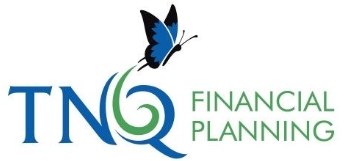by Dermot Ryan
The turn of a decade is a significant thing for people who make predictions for a living, and a lot of economic commentators took the opportunity around the beginning of this year to publish outlooks for the decade ahead. But if any of them had managed, at the time, to adequately convey a sense of how events would actually unfold over just the first nine months of the decade I wonder whether we’d actually have believed them? It has been a bizarre rollercoaster.

Most of us naturally expected that the coming years would, at least to a certain degree, resemble the past. But 2020 was the start of a very different decade, and for markets, the optimism which dominated the first month of the year turned very quickly to fear. A once in a decade buying opportunity followed through March and April, but this appears to have mostly played through. Investors are left trying to figure out exactly where we stand and what will stick; how much of our experience will still hold true in the years to come and how much we’ll need to reconstruct anew.
As this search for solid learnings from a disrupted year continues, Australian equities have recovered to within 15% of the all-time highs recorded at the beginning of this year. There is undoubtedly still value to be found, but we think fundamentals investors need to be highly aware of political and economic circumstances surrounding their options and more discerning in their assessment of a business’ prospects.
August reporting provides answers and further questions
The most recent reporting season had something for everyone. Dividends generally exceeded some pretty low expectations, which reflected diminished corporate revenues during the lockdown period, but the market’s performance across various sectors was mixed:
-
Mining stocks led the way in terms of cashflow, with over half reporting net positive cash positions and a number posting record revenues, with iron and gold particularly strong.
-
The energy sector has not fared nearly as well, with low commodity prices across oil, gas, and electricity constraining profits, although energy stocks are well positioned for a rebound as demand recovers.
-
Excessively optimistic valuations around technology stocks have helped that sector lead price momentum in the market, but a number of tech companies may be running on fumes for some time to come with regards to profitability.
-
Banks have been particularly exposed to fallout from COVID-19 across the wider business sector, with both dividends and growth likely to be affected for some time to come.
Where next for Australian equities?
The broader picture facing the Australian market we think is more steady but promising, to a degree. Local businesses have been more resilient than many expected, and valuations have mostly normalised to mid-cycle levels. There are still a number of reopening trades that we would consider are still quite attractively priced – under-valued stocks with good balance and cash flows to weather the remainder of the pandemic.
Unfortunately, despite a promising start effective long-term control of the virus is proving to be quite difficult, and eradication in the Australian context looks like somewhat of a fantasy, especially given that a vaccine may still be some time away. So we’re likely to have to face into the difficult reality of life with some level of disruption from the virus in our lives and the market. But humans and businesses are nothing if not adaptable.
The market is still vulnerable to significant economic and geopolitical risks, with the gradual withdrawal of stimulus and an oversupply of capital chasing questionable prospects amongst the former and the potential for a trade showdown between China and the West (if not an actual military confrontation) prominent among the latter. Our key trade partnership is at risk.
Consumer confidence will be key and will lead the road to recovery
A bright point for the Australian economy over recent months has been the extent to which consumer confidence and spending has held up through the pandemic. The Federal Government’s stimulus measures have been timely and well-implemented, and it is showing in both our GDP numbers, relative to the rest of the world, and our propensity to open our wallets.
A wave of online purchasing has led the way, with households spending up on homewares, furniture, DIY and electronics – basically anything that makes home life more comfortable as we all spend more time there.
As the full effects of the crisis continue to play out in business closures and unemployment following the winding back of stimulus measures through 2021, the extent to which this consumer confidence holds up will be key. Working in our favour will be a raft of pent-up demand for products and services not available in 2020, especially in the tourism and entertainment sectors. While investors could consider becoming more discerning at this point, companies with good balance sheets and adaptability should fare well as we face into the challenges and opportunities ahead.
Author: Dermot Ryan, Dermot Ryan Co-Portfolio Manager, Equity Income, Sydney, Australia
Source: AMP Capital 15 September 2020
Reproduced with the permission of the AMP Capital. This article was originally published at AMP Capital
Important notes: While every care has been taken in the preparation of this article, AMP Capital Investors Limited (ABN 59 001 777 591, AFSL 232497) and AMP Capital Funds Management Limited (ABN 15 159 557 721, AFSL 426455) (AMP Capital) makes no representations or warranties as to the accuracy or completeness of any statement in it including, without limitation, any forecasts. Past performance is not a reliable indicator of future performance. This article has been prepared for the purpose of providing general information, without taking account of any particular investor’s objectives, financial situation or needs. An investor should, before making any investment decisions, consider the appropriateness of the information in this article, and seek professional advice, having regard to the investor’s objectives, financial situation and needs. This article is solely for the use of the party to whom it is provided and must not be provided to any other person or entity without the express written consent of AMP Capital.
